Flexible solar panels: an overview of typical designs, their characteristics and connection features
Solar energy is one of the most promising and rapidly developing alternative sources of electricity. This is a limitless resource that can be used anywhere in the world without polluting the environment. Agree, it would be nice to have your own alternative source of electricity.
It turns out that now solar energy can be converted into electricity right at home. Instead of bulky and fragile frame panels, flexible solar panels are now increasingly being used. But how to put it into practice?
We will help to deal with the device of flexible solar panels and the principle of their work. Useful recommendations for the selection and installation of structures are presented in our article. And for ease of perception of information, the article contains thematic photographs and videos.
The content of the article:
What are solar panels?
In order to understand whether flexible panels are suitable for generating electricity, you need to understand the theory.
What is a solar battery, how is the structure of flexible models different from the rest? And it is also very important to find out the advantages and disadvantages of this particular type of solar cells even before the purchase.
The structure and principles of operation of flexible panels
The principle of operation of the solar battery is based on such a concept as photovoltaics. Light, as you know, can be considered both as a wave and as a stream of particles - photons. The ability to convert photon energy into electricity is photovoltaics.

A semiconductor is a material that has a special atomic structure.An n-type semiconductor has extra electrons, and p-type semiconductor atoms lack them. To assemble the photocell, 2 types of materials are combined to form a two-layer structure.
Separate photocells are combined in a panel. Panels can be rigid, in a strong metal frame. Now there is a tendency to facilitate the design of photo panels. Flexible and light solar cells are gaining popularity.
The principle of operation of the solar battery can be described as follows:
- Sunlight hits the surface of the photocell from the side of the n-layer.
- Photons collide with the atoms of the semiconductor, "knocking out" extra electrons.
- Free electrons move towards the p-layer and fall into atoms with a lack of particles.
- As a result, the upper layer acts as a cathode, and the lower layer acts as an anode.
- It produces direct current that can easily charge the battery.
Silicon, selenium and many more more expensive materials are used as semiconductors.
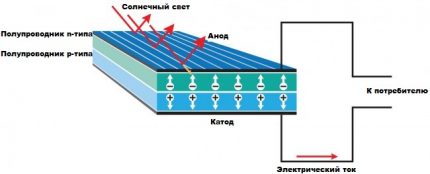
For flexible film solar panels, polymer spraying with aluminum conductors is also used. This structure makes the panels surprisingly thin and light.
This technology is just beginning to develop, but the fact that it has great prospects is beyond doubt. But we will look at flexible panels in the broad sense of this definition.
You can read more about the principles of operation of solar panels by clicking on the link.
The benefits of flexible solar cells
The advantages of flexible solar panels make this method of electricity production one of the most promising:
- weight;
- the size;
- elasticity;
- performance;
- universality;
- profitability;
- environmental friendliness;
- ease of operation.
The geometric and physical parameters of the panels, such as size and weight, are of great importance, since it will take a large number of panels to provide electricity to the whole apartment building, when using heavy models it may be necessary to strengthen the structure of the building,which will significantly increase installation costs.
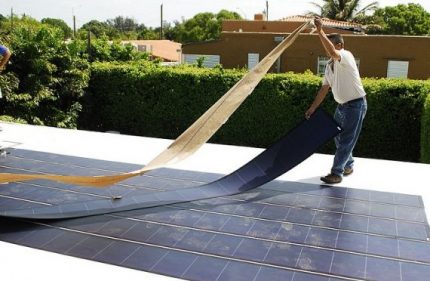
The performance of silicon batteries is quite high. It is difficult to evaluate the efficiency in this case, semiconductor panels are able to convert light to electricity by 20% on average.
That is, if the power of solar radiation is 200 watts, about 40 watts of electricity will be received.
Flexible amorphous solar panels are much more tolerant of cloudy weather than conventional rigid silicon-based structures.
For comparison, a standard solar battery in cloudy weather is able to operate only at 10% of its capacity, while a flexible panel produces about 50% of the nominal values.

Sunlight is a free and unlimited resource. This is his undoubted advantage, which expresses the unconditional efficiency of solar panels.
In addition, this method of energy production is completely environmentally friendly, does not affect the state of the environment and does not harm it. Moreover, abandoning the popular alternative to solar energy - thermal power plants, mankind reduces the level of air pollution.
Disadvantages of Flexible Solar Panels
The disadvantages of flexible solar panels are also enough. Firstly, this technology is only developing and has not yet reached the peak of its capabilities. In terms of performance, flexible amorphous batteries are inferior to rigid poly- or single-crystal ones.

Secondly, thin foil and a minimal coating layer fail relatively quickly. The warranty period of operation of such panels is about 3 years.
After this, the photocells begin to gradually break down and require replacement.
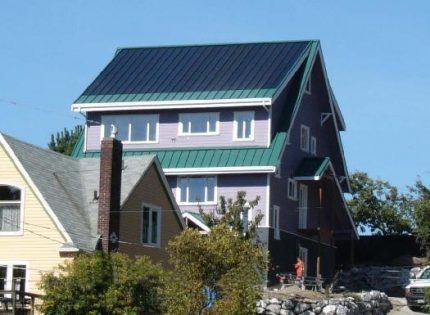
Other disadvantages are inherent in all types of solar panels:
- payback time;
- high price;
- a large number of expensive equipment, in addition to the batteries themselves;
- weather dependent.
A flexible panel with a power of about 150 W costs about 40 thousand rubles. or more, depending on the manufacturer. 20 batteries, a set of batteries and additional equipment will cost a round sum. Given the cost of 1 kWh of electricity, you will have to recoup the system for more than one year.
Where and how is solar energy used?
Flexible panels are used in various fields. Before drawing up a project of energy supply at home using these solar panels, find out where they are used and what are the features of their use in our climate.
Scope of solar panels
The use of flexible solar panels is very wide. They are successfully used in electronics, electrification of buildings, automobile and aircraft construction, and space objects.
In construction, such panels are used to provide electricity to residential and industrial buildings.
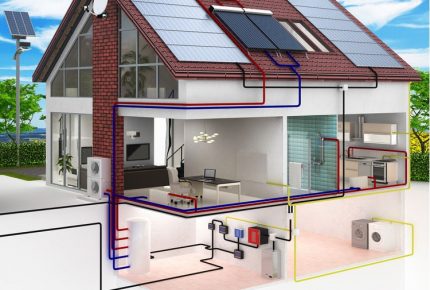
Flexible solar cell portable chargers are available to everyone and sold everywhere. Large flexible tourist panels for generating electricity in any corner of the globe are very popular among travelers.
A very unusual but practical idea is to use a roadbed as the basis for flexible batteries. Special elements are protected from shock and are not afraid of heavy loads.

This idea has already been implemented. The "solar" road provides energy to the surrounding villages, while not taking up a single extra meter of land.
Features of the use of flexible amorphous panels
Those who plan to start using flexible solar panels as a source of electricity for their home should know the features of their operation.
Solar panels with a flexible metal base are used where increased demands are made on the durability of mini-power plants:
First of all, users are concerned about the question: what to do in winter, when daylight hours are short and there isn’t enough electricity for all devices to function?
Yes, in cloudy weather and short daylight hours, panel performance is reduced. It’s good when there is an alternative in the form of the possibility of switching to a centralized power supply. If not, you need to stock up batteries and charge them in those days when the weather is favorable.
An interesting feature of solar panels is that when the photocell is heated, its efficiency is significantly reduced.

The number of clear days per year varies by region. Of course, in the south it is more rational to use flexible batteries, since the sun shines there longer and more often.
Since the Earth changes its position relative to the Sun during the day, it is better to arrange the panels universally - that is, from the south side at an angle of about 35-40 degrees. This situation will be relevant both in the morning and evening hours, and at noon.
Installation instructions for solar panels on the roof
If you decide that flexible solar panels based on amorphous silicon is what you need to provide electricity to a private home, start planning work.
Choose the right equipment and estimate the approximate number of panels. Then read the rules for installation and subsequent maintenance of solar cells.
But remember that the use of traditional silicon poly- and single-crystal analogs is much more productive so far.
Step 1. Calculation of the number of panels
Any work begins with the project. For the design you need to make the necessary calculations, namely:
- daily electricity consumption;
- total required power of photocells;
- battery capacity;
- number of panels.
The simplest thing is to calculate the electricity consumption. To do this, take into account absolutely all electrical appliances that you use or theoretically can use.
A simple example:
- refrigerator - 200 W;
- computer - 300 W;
- TV - 150 W;
- economical bulbs - 5 pieces of 20 watts each.
The power of each device must be indicated in its documentation or on the housing. After adding all the data, we get 750 watts. Based on this value is selected inverter - a device that converts direct current into alternating current with the desired frequency.
Be sure to make a small margin and select an inverter that is 0.5 kW more powerful than the calculated value. That is, for a total power of 0.75 kW, a device no weaker than 1.25 kW is suitable

Then you need to pick up the batteries. The battery capacity (for example, 200 A показывает h) indicates what current will be output at a given voltage for an hour.
You can calculate the required capacity by dividing the total power of consumers by the output voltage of the solar battery. In our example, we use 12-volt batteries. 750/12 = 62.5 A ∙ h.
But such a formula is not entirely true, since most batteries cannot be discharged to 0. There is a certain limitation, for example 40%. If the charge level drops below, this significantly affects the life and quality of the battery.
This indicator also needs to be added to the formula:
750 W / (12V × 0.4) = 156.25 A ∙ h.
To achieve such a capacity, you can combine a group of 2 batteries of 100 Ah each into a system.
The number of panels is calculated based on the power of the selected model and the region in which they will be installed. The significance of the region is difficult to overestimate. Ideally, you need to find the values of the daily level of solar radiation for your area. For reliability, the minimum value for the year is taken, tentatively - at the end of December.

Multiplying this indicator by the number of calendar days of the month, we get the number of kilowatts per 1 m2 of flexible solar battery in December. For example, in Moscow this is 0.33x31 = 10.23 kW / m2, and for Sochi - 1.25x31 = 38.75 kW / m2. This indicator is called the number of hours.
Then from the conditional maximum 0.75 kW consumed by all devices at the same time, we calculate the average monthly consumption - about 25 kW. For a month, our flexible batteries must generate at least 25,000 watts, and it is better to make a small supply and round up to 30 kW.
Therefore, for 1 hour in Moscow should be 30 / 10.23 = 2.93 kW. If the selected panels have a power of 150 W, then it is not difficult to calculate their number: 2.93 / 0.15 = 20 pieces.
After such simple calculations, you can choose a suitable inverter, controller, battery and flexible photovoltaic panels themselves in the right amount.
Step # 2. Installation Rules
Installation of flexible solar cells can be done by you yourself.
To do this, it is worth determining where exactly you will place your panels:
- on the roof of the building;
- on the facade of the house;
- on a separate structure;
- combined circuit.
The most popular option is on the roof. If the shape or configuration of the roof does not allow this, it is better to build an additional frame on which to place the batteries. This is more costly, but if the roof is shaded or hard to reach, this option becomes rational.
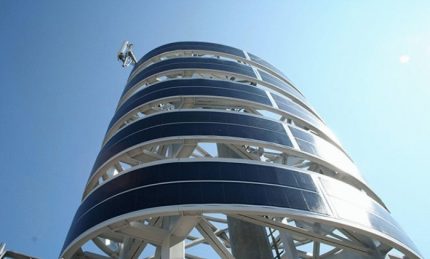
Flexible solar photovoltaic cells on the underside have a sticky resinous layer.
It is enough to remove the protective film and stick the panel in the selected place. Of course, before mounting the surface needs to be cleaned and washed.
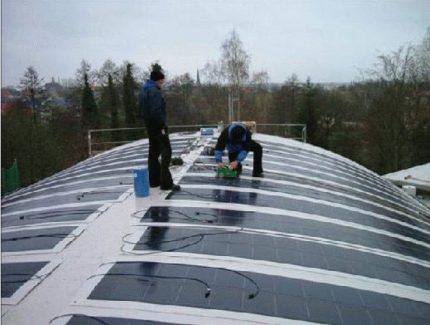
On one side, the solar module has 2 lead-out cables. Each panel is positioned so that these wires can subsequently be combined with one bus for serial connection.
We also recommend reading our other material, which describes in detail the installation diagrams and methods for connecting solar panels. More details - here.
Step # 3. System Maintenance After Installation
After installing flexible solar cells, they will need to be constantly looked after and monitored, otherwise their effectiveness may drop dramatically. The main thing is to keep the panels clean. Dust, dirt, bird droppings - all these factors reduce the performance of the system, since they limit the absorption of sunlight by photocells.
Solar panels must be wiped as they become dirty. That is why it is not recommended to place them in hard-to-reach places on a complex roof.
If your system cannot be serviced by you yourself, you can always find an artist with the appropriate machinery and equipment. Of course, it will be more expensive.
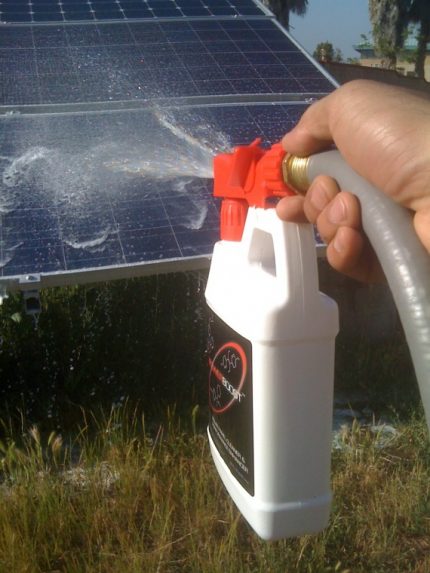
Another problem that is relevant for our regions is snow. In winter, the batteries fall asleep in snow and stop functioning. Precipitation must be constantly cleaned, but not too coarse, otherwise the equipment itself may be damaged.
Conclusions and useful video on the topic
Videos and reviews that look at flexible panels from popular manufacturers will help you make the right choice. You will be able to see how your house will look after the installation of equipment, experts will help you choose the right number of batteries and consider the installation rules.
How flexible solar panels are arranged and what they are made of:
You can install a flexible battery in an apartment on the facade of a high-rise building, why not:
A little more about the production and advantages of flexible elements:
Solar panels make it possible to become non-volatile, not to monitor gas prices and utilities. If you invest a certain amount once, you can consume unlimited energy to use household appliances, home heating and recharging the battery of an electric vehicle. More and more people are switching to alternative energy, because the future lies behind it.
If you have the necessary knowledge or experience on the topic of our article, please share it with our readers. Or maybe you had to install solar panels yourself? Tell us how you did it. You can supplement your comments with photos.

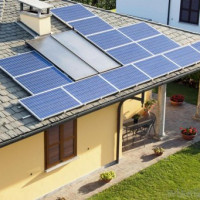 Types of solar panels: a comparative overview of designs and tips for choosing panels
Types of solar panels: a comparative overview of designs and tips for choosing panels 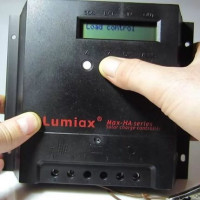 Solar charge controller: circuit, principle of operation, connection methods
Solar charge controller: circuit, principle of operation, connection methods  Solar panels for heating a house: types, how to choose and install them correctly
Solar panels for heating a house: types, how to choose and install them correctly 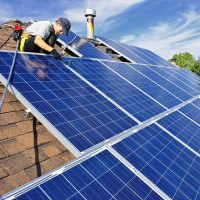 Solar panels for summer cottages and houses: types, principle of operation and calculation procedure for solar systems
Solar panels for summer cottages and houses: types, principle of operation and calculation procedure for solar systems 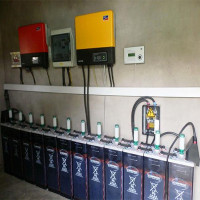 Solar batteries: an overview of the types of suitable batteries and their features
Solar batteries: an overview of the types of suitable batteries and their features 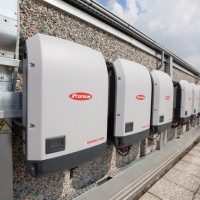 Inverter for solar panels: types of devices, model overview, connection features
Inverter for solar panels: types of devices, model overview, connection features  How much does it cost to connect gas to a private house: the price of organizing gas supply
How much does it cost to connect gas to a private house: the price of organizing gas supply  The best washing machines with dryer: model rating and customer tips
The best washing machines with dryer: model rating and customer tips  What is the color temperature of light and the nuances of choosing the temperature of the lamps to suit your needs
What is the color temperature of light and the nuances of choosing the temperature of the lamps to suit your needs  Replacement of a geyser in an apartment: replacement paperwork + basic norms and requirements
Replacement of a geyser in an apartment: replacement paperwork + basic norms and requirements
Although flexible solar panels have flaws, I think the future lies with them. Energy production in this way is constantly evolving. The main thing is that they are easy to use and install. Unlike solar collectors, they are not bulky. As for the short life or quality of the spraying, all this will be modernized. Experienced foreign samples are already presented, capable of serving more than 10 years. So this alternative energy segment has excellent prospects.
In the country cottage installed flexible solar panels. They were chosen precisely because they do not occupy a lot of space, light, elastic, they are simply mounted. The savings are tremendous, we use centralized power supply only in winter, and then not all day, but only when the charge on solar panels ends. One “but” - the batteries must be constantly looked after, cleaned from dust, and in winter also from snow!
What region do you live in? I really want to try, but there are doubts about the effectiveness. And another question - how are flexible panels with impact resistance? In ordinary there is a protective glass, but here?
I already gave a question about efficiency here. You can be guided by it, being guided by the latitudes and power of solar panels.
Regarding impact resistance, everything is also provided by manufacturers here. In particular, the German brand produces excellent CentroSolar S-Class Vision solar panels with a 30-year warranty, combining impact-resistant qualities and power safety of at least 87% for the entire warranty period. This manufacturer has a crash test video of how I test solar panels for strength. Thanks to modern technology, not even a large hail is terrible.
The panels are tested according to three criteria: vandal resistance, mechanical load and city resistance.
Good day. There is a question, if possible. There is a protective film on the surface of the panel - is it necessary or not to remove it if the panel is on the street? And does the film affect the performance of the panel?